Ionisation
Smoke Detector
Air in the dual sensing chambers is irradiated to
produce ions that travel to the positive and negative
electrodes, creating a current flow. As smoke enters the
outer chamber, the flow drops and voltage increases. The
voltage is measured and an analogue signal is converted
to digital for transmission to the control equipment.
For important technical information regarding sensitivity
to air movement, please
click here.
|
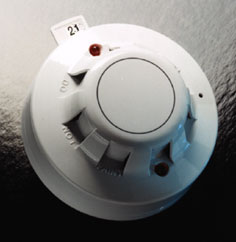 |
Optical
Smoke Detector
The
Discovery optical smoke detector uses an IR LED which
pulses light across a smoke chamber with a photo-diode
set an obtuse angle. In clear air it receives no light,
but when smoke enters the chamber, light from the LED
is scattered onto the photo-diode. A signal is then processed
to provide an analogue value for transmission when the
detector is polled.
|
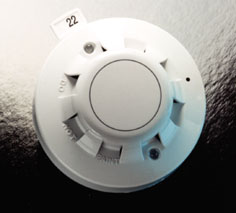 |
Heat
Detector
The
Discovery heat detector, distinguishable by the low airflow
resistant case, uses a single thermistor to sense the
air temperature around the detector. The thermistor is
connected in a resistor network, which produces a voltage
output dependent on temperature.
|
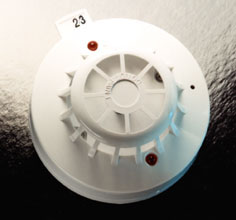 |
Multisensor
Detector
The
Discovery multisensor detector contains an optical smoke
sensor and a thermistor temperature sensor whose outputs
are combined to give the final analogue value. The multisensor
is, therefore, useful over a wide range of applications
and is highly immune to false alarm sources.
|
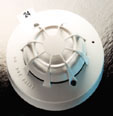 |
|
Carbon
Monoxide Detector
The
Discovery Carbon Monoxide (CO) fire detector contains
a long-life electrochemical CO sensor. The sensing technology
is fast, accurate and needs only very low power. CO
detectors do not detect smoke particles or heat and
are not universal replacements for smoke detectors.
For
more information, visit the
CO
Detector page.
|
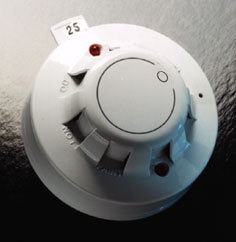 |
Manual
Call Point
When operated, the manual call point interrupts the
polling cycle and can report its address in under 0.2
seconds.
|
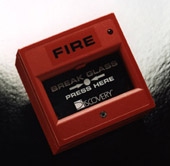 |
Mounting
Base
All detectors in the range fit into XP95 mounting bases.
The bases have a wide interior diameter for ease of access
to cables and terminals and there are two slots for fixing
screws. Detectors fit into bases one way only, without
snagging, and require clockwise rotation without push
force to be plugged in.
|
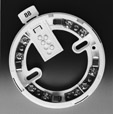 |